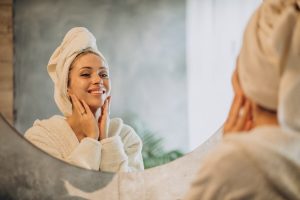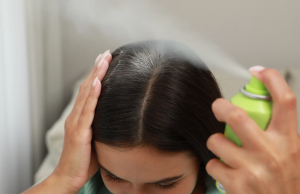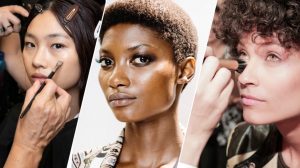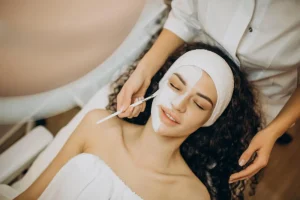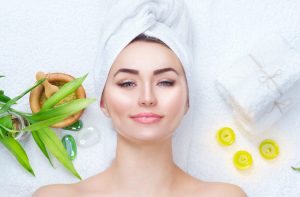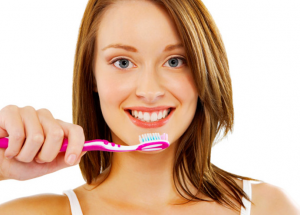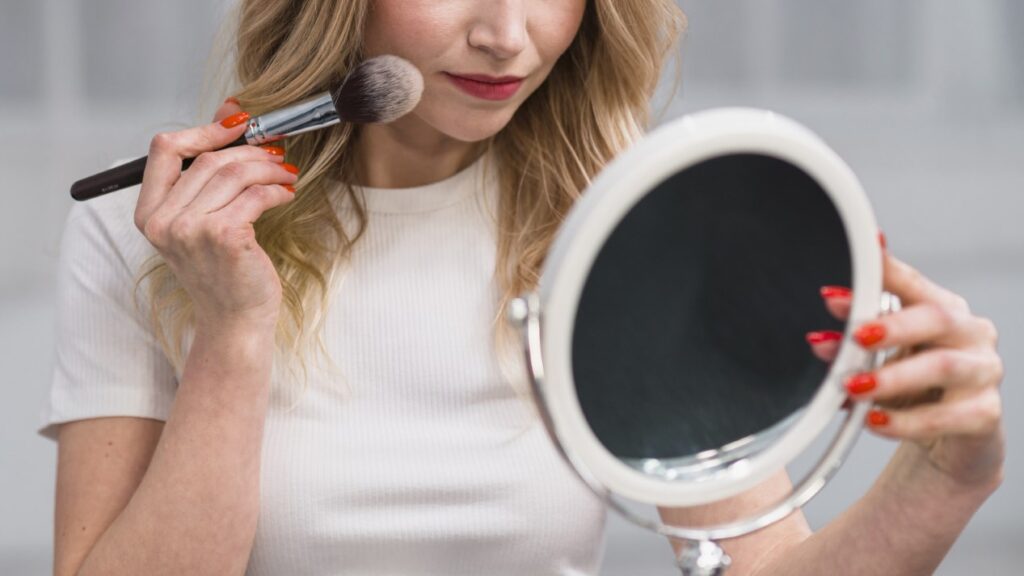
Contents
Make-up is the common point of all women! In this article, we tell you about the use of blush, bronzer and highlighter in a giant article. Is your coffee ready? 🙂
What is Blush, Bronzer and Illuminator, How to Use?
Let’s face it. Blush, illuminator and bronzer are the three most enigmatic make-up materials for many make-up lovers who have not yet mastered it. If you don’t know what illuminator is, ” where to apply blush ?”, “what is a bronzer ?” If you are one of the thousands of cute novice make-up lovers who stare at the mirror in disgrace, you are in the right place. Say hello to our giant guide about blush , highlighter and bronzer. In this special guide for makeup beginners, you will find answers to the following questions that are often on the minds of beginners:
-
What is blush? How to apply blush?
-
What is Bronzer? Where is the bronzer applied?
-
What is an illuminator and how is it applied?
-
And great BONUS info
Looking forward to reading quality and fresh information on blushes, highlighters and bronzers, right? Then let’s get started!
1. Blush
Blush is one of the three make-up materials that everyone knows best, but often misused and where there is a lot of misinformation about where to apply it. Now is the time to learn the truth about blush.
What is blush?
Blush is a make-up material that is generally produced in powder form, which is used in face make-up and aims to give a natural blush to the cheeks. It gives the cheeks a slightly flushed appearance, as if from mild shyness, excitement, rush or positive excess energy. With a properly applied blush, pale faces naturally acquire a healthy appearance; because a slight pinkness on the cheeks is one of the biggest signs that those who lead a healthy life in an oxygen-rich environment and without toxins are healthy.
Blush also plays an important role in face contouring and face sizing with makeup. The biggest problem that makes it difficult to use blush is that it plays a big role in face shaping.
As you know, an incorrectly applied blush can make the face look too round and wide; or it may go beyond natural and cause an overly reddened appearance.
This leads us to the following important question.
How to apply blush?
Before answering the questions ” how to apply blush” and ” where to apply blush “, it is necessary to start with the question of how a blush brush should be. Because, in order to apply the blush correctly, first of all, it is necessary to use the right blush brush.
How should the blush brush be?
If you are a beginner in blush, we recommend using a smaller, small-headed blush brush that looks like a mixture of round and rectangular rather than round, instead of a fluffy blush brush as big as the palm of your hand. In this way, until you get used to applying blush, you will be able to apply the blush in a more controlled way without carrying it to excessive and unnecessary places. As you get used to it, you can upgrade to larger-headed blush brushes, and thanks to fluffy and large blush brushes, you can finish applying blush in one or two moves. When choosing a blush brush, famous make-up artists should definitely use kabukiThey prefer brushes with extremely soft and fluffy bristles. We also recommend quality kabuki blush brushes for those who ask “how should a blush brush be”, as they hold powder blush better and spread it smoothly .
Let’s get to the real issue.
How & where to apply blush?
The answer is actually simple.
To apply blush, first take a large amount of blush on the blush brush, but before applying, hold the brush a little away and blow gently on the top. In this way, the excess powders that are not properly adhered to the brush will fly away, leaving only the part that tends to be applied well. Just don’t blow it hard enough to blow it all off.
To apply blush correctly, follow this method:
First, smile big without showing your teeth.
Choose either right or left cheek to get started.
You know those cheek balls that appear when you smile. Place the blush on top of this small hill that appears when you smile, and do not touch the part where the crown decreases towards the nose and lips. Gently slide the brush to the other side, towards the roots of your hair.
Attention! Do not go towards the ear!
A blush that is applied straight from the top of the smile towards the ear means that it is applied incorrectly.
Instead of the ear, you need to go slightly upwards from the point you started, towards the hair roots just above the ear.
The path you follow is actually nothing but your cheekbone.
Starting from the hills of the smile, after applying the blush along your cheekbones to the roots of your hair, you can once again highlight the smile hill with brush strokes without approaching the eyes and nose.
Just like the dots in the cheek area in the photo.
It’s that simple!
BONUS
Some more great bonus information for you on using blush!
Bonus 1:
Selection of blush color according to skin tone
The popular question that comes to almost everyone’s mind before using blush is “How to choose a blush color ?” the question is. Here are two very useful answers for blush color selection:
1. Blush color selection for fair-skinned people:
If you are fair skinned, “tones of pink” are the best blush color for you. Light or dark, every shade of pink is used by make-up artists to give a healthy look to the cheeks of fair / white skinned people.
2. Blush color selection for dark and tanned skins:
If you are brown and wheat skinned or have a fresh tan in the summer, the most suitable blush color for you when applying make-up is definitely peach tones. Make-up artists all over the world use peach tones, which are the undertones of their skin, on bronze, wheat and dark skinned people. Pink tones are definitely not recommended for you.
3. Blush color selection for fair to dark skin:
If you don’t exactly call yourself “white skinned” or “dark skinned”, if you tan a little and your skin tone is not very dark, the best choice of blush color for this dark to light complexion is coral shades. Coral color is a proportional mix of pink and orange. It’s not quite orange, not quite pink. Owners of neither completely light nor dark skin can make their cheeks look healthy by applying this mixture tone. If your color is closer to light, you can mix a little light pink into the coral, or if your skin is close to wheat, you can create your own special blush color by mixing and applying a little more peach tone to the coral. However, if you’re not sure about your skin tone, don’t take the risk and just go for a coral-toned blush. We recommend your application.
Bonus 2:
How to clean the blush brush?
Actually, this answer is a great cleaning method that you can use for all your brushes, not just your blush brush.
Are there shampoos that are outdated because you didn’t like them after you bought them, you left them because they weren’t good for your hair, or you forgot to use them? Now is the time to evaluate them.
Most of the makeup brushes are actually produced with materials like ponytail bristle, similar in structure to human hair. In order for these brushes to be cleaned properly and not to wear out while being cleaned, washing them with shampoos you consider worthy of yourself is the best cleaning method for your brushes.
For this, after pouring some shampoo into a tea saucer, dip each of your brushes in the shampoo without pressing too hard, as if you were painting inside the plate. While you are rinsing your plate, let the brushes soaked in shampoo stand aside with shampoo for a few minutes. Then rinse the bristles with warm water and gentle taps. After wrapping the rinsed brushes in a soft towel and rubbing them lightly, lay a dry part of the towel under them and let them dry naturally in your room where they can dry in a healthy way.
It is important for your skin health to do the brush cleaning process 2 or 3 times a week, depending on your frequency of use.
By the way, if you need to clean your brush urgently when you are going to switch between two different colors, wet wipes for sensitive skin are enough to clean the brush practically and save the moment.
Bonus 3:
Blush Prices
Blush prices actually vary from brand to brand, but we wanted to make it easier for makeup lovers who are novices in blush by adding a ready-made link where they can find the prices of various blushes. Do not forget to read the rest of the article after reviewing the prices.
Bonus 4:
Blush Palette
Blush palettes are make-up materials that combine several different blush colors and are very convenient to carry in your bag.
Blush palettes usually contain lighter and darker tones of a color, not very different colors. In this way, for a fuller and more natural blush application, it is easier to apply blush and obtain a more beautiful result by moving a wide brush over the palette and taking more than one tone with one brush.
At the same time, if you have a blush palette, you can easily carry the palette in your bag and have more than one color option when you need an urgent make-up outside.
You have acquired the most basic information about blush. Now let’s get to the harder.
Enlightening
Illuminator , that is, highlighter , is a must for a neat and complete make-up, but most of us skip using illuminator in make-up. A greater majority of us have never used an illuminator in their life, as they keep asking what is an illuminator, where to apply the illuminator, and how to use it.
Here begins the detailed highlighter guide that will take novice makeup lovers a giant leap towards mastery.
What is illuminator?
Illuminator is a make-up material used in make-up to shape the face and to make certain parts of the face appear lighter and brighter. As a form, it is possible to encounter liquid illuminators, just like foundation, but powder illuminators in powder form are also quite common.
The illuminator is mostly used in the fountains of the eyes, just below the eyebrow and just above the line where the blush is applied. However, it would be useful to explain questions such as “how to apply the illuminator” and “where to apply the illuminator” in more detail.
How is the illuminator applied?
In order to apply illuminator, you first need to get a proper illuminator brush. The illuminator brush is in the form of a thick and wide fan.
So like this:
Once you have the right brush, the answer to the “how to apply highlighter” question is simple.
If you are going to use a liquid illuminator, take a small amount of the illuminator onto your hand and apply a coarse drop to the areas to be illuminated with your fingertips. Before this drop you leave on the area where the illuminator will be applied on your face dries, quickly distribute the illuminator to the relevant area using your illuminator brush.
If you are going to use powder illuminator, that is, illuminating powder, take some of the powder on the brush with your fan-shaped brush and blow it lightly, just like in blush, then apply it lightly to the necessary areas using the shape of the fan brush and distribute it to make it look natural.
So, where does the illuminator go?
Here are the answers to the main question!
1. Eye Springs
The illuminator should first be applied to the eye springs as a small dot.
2. Above and Below the Brow Line
Highlighter as a line just above the brow, also on the brow bone just below the brow light
(distributed below) should be applied.
3. Under Eyes
Although not all under the eyes, it can be applied to a small area in the line following the eye spring downwards, that is, on the side close to the nose.
4. Middle Forehead
Applying highlighter to the middle of your forehead, just above your nose, is a form of face contouring.
an important part.
5. Nose
You can make your nose look more minimal by applying a long highlighter to the bone just above it, not the sides of your nose.
6. Top Line of Cheekbones
By applying illuminator to the upper end of your cheekbones, you will highlight the applied blush. This will make the blush look like a shadow when viewed from afar and make your cheekbones appear prominent. The most commonly used illuminator.
This must be the case.
7. Upper Lip Line
You can get fuller lips with the 8th item by applying illuminator only to the middle part, in a line just above your lip.
8. Lower Lip
On your lower lip, explore with your hands the spots of your lip that are already slightly swollen by itself. Due to the normal anatomy of the lip, both sides of the middle part are slightly full. You will support the fullness by applying a very light liquid illuminator (or light-colored lipstick) on these points, on top of your lipstick.
9. Chin Tip
The lower end of the chin is one of the points where illuminator should be applied.
An illuminating make-up without skipping any of the 9 areas will be one of the moves that shape the face the most.
However, if you are using a highlighter to shape the face , a complete contouring is not possible without a bronzer.
Let’s get to bronzer.
Bronzer
Here we come to the hardest! Bronzer, in other words bronzer, is one of the most difficult materials to apply in make-up novices.
Although it is almost the most important step in shaping and resizing the face, those who know it or not, often skip applying bronzer when applying make-up. However, if it is made into a habit and put into daily makeup, a slightly contoured face every day is almost equivalent to looking perfect.
Here is the detailed guide to using bronzer for beginners!
What is Bronzer?
Bronzer is actually nothing more than a liquid or powder (powder) foundation, darker than the skin color, that those who want to achieve a bronze skin color used to apply to their entire faces.
Nobody pours bronzer on their entire face easily anymore, exaggerated bronzer applied faces were the fashion of the 90s.
Bronzer is a make-up product that is used mostly in winter for those who miss their summer look, to slightly warm their skin color and look healthy. It is also used to shape and contour the face in summer and winter.
Especially when used with illuminator, it is possible to achieve many face shaping tricks such as making a round face appear longer, making a long face look more oval and defining facial features. If you have a bronzer.
So how do you use bronzer?
Financial?
How to apply bronzer?
f your aim is to define your facial features, that is, if you are going to use bronzer for contouring, get a small, round and soft powder brush. After brushing some of the bronzer, which is usually in powder form, and blowing it on, you need to apply it to the parts of your face that seem to be in the shade when you look at them from afar, as in the picture below.
That is, the two sides of your forehead, the sides of your nose, your temples, the lines of the earlobes of your cheeks, the underline of your lower lip and the outer corners of your chin, and the first parts that protrude slightly from your face to your neck.
In the photo below, you can see how perfect the bronzer and highlighter are when used correctly.
If your goal in using bronzer is not to contour the face but to get a really bronze skin color, then you should choose a big and round soft kabuki powder brush as a bronzer brush.
To get a healthy bronze look as if you are living under the sun, apply a small amount of powder bronzer to your cheeks with circular movements after applying it to your large brush. Gently distribute it to your temples and the sides of your chin.
For a natural look, it is necessary to apply more to the cheeks, and to distribute the excess powder evenly to the sides, towards the chin and forehead.
If you are a beginner, start with a very small amount of bronzer to avoid risk and increase it until you get the look you want. However, regardless of the purpose, be sure to avoid overdoing the bronzer.
Now you know very well what bronzer, highlighter and blush are, where and how to apply them.
After running and applying your fresh knowledge, come back here and read our article titled “ Practical make-up in 5 minutes for business women”!

